Kuala Lumpur, referred to by locals simply as “KL”, is the federal capital of Malaysia. This sprawling metropolis is the country’s most populous city, and main cultural center. Read on to learn more about one of Southeast Asia’s most dynamic destinations.
From Muddy River to Metro Area
The name Kuala Lumpur literally means “muddy river confluence” in Malay. In just 150 years, the city has grown from a sleepy Chinese tin-mining village, to a bustling urban area with more than seven million inhabitants. A true cultural melting pot, the city offers some of the world’s most affordable 5-star hotels, great shopping opportunities, and even better food. In addition, the surrounding area features some of nature’s greatest wonders, which can be reached in around an hour by car.
KL is a sprawling city, with several distinct districts to explore.
Popular Attractions in KL
The old city center is the traditional core of Kuala Lumpur, where the former colonial administrative center can be found with Merdeka Square, the Sultan Abdul Samad Building and the Royal Selangor Club. This area also includes the city’s old Chinese commercial center, known today as Chinatown.
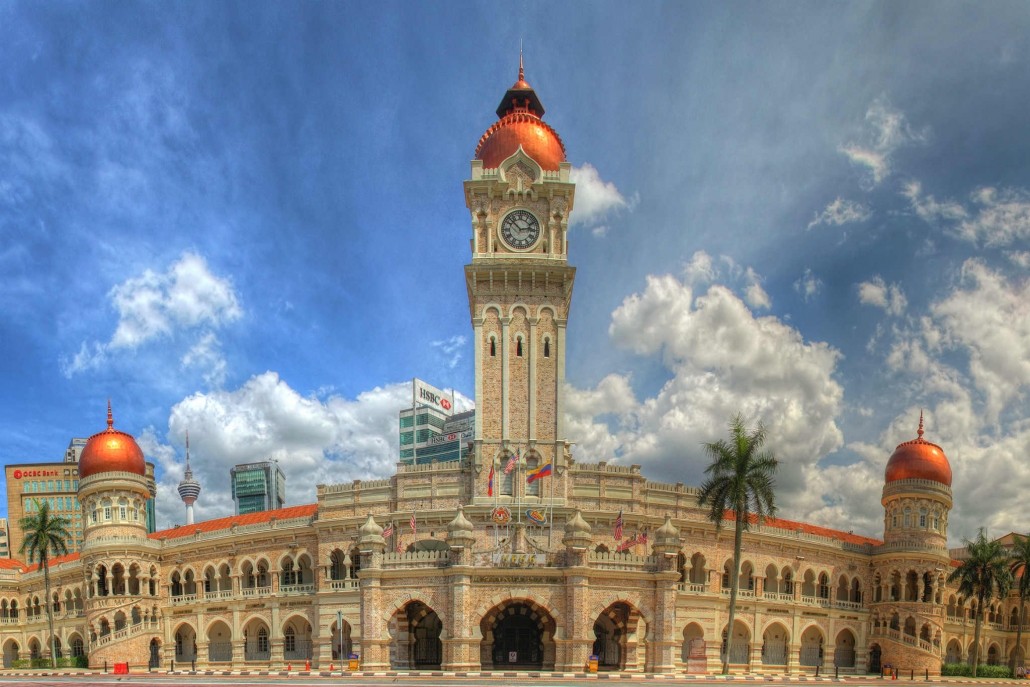
The iconic Sultan Abdul Samad Building, a historical structure from Malaysia’s colonial times.
The Golden Triangle is KL’s main Central Business District. Located to the northeast of the old city center, many of the city’s popular shopping malls and five-star hotels can be found here. Glittering skyscrapers light up the night sky, including the iconic Petronas Towers. These architectural wonders dominate the skyline, and are the tallest twin towers in the world.
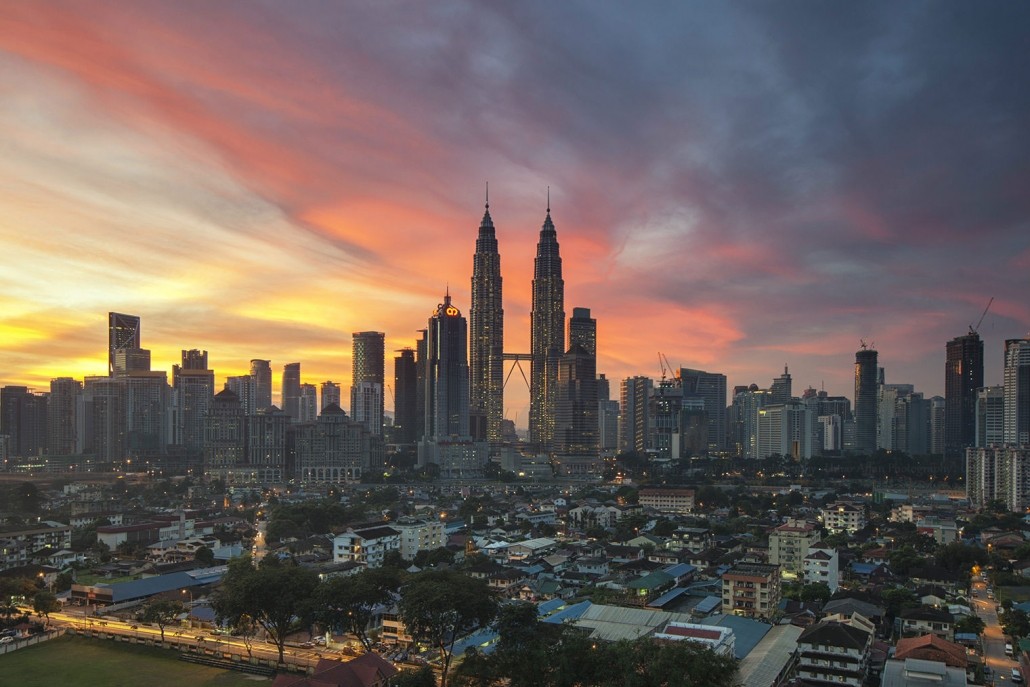
The iconic Petronas Towers dominate the skyline of Kuala Lumpur’s modern CBD.
Located south of the city center, the Brickfields area is known as KL’s “Little India”. The area is filled with ethnic clothing shops and popular banana leaf restaurants, reflecting the cultural influence of the city’s sizeable Tamil Indian population.
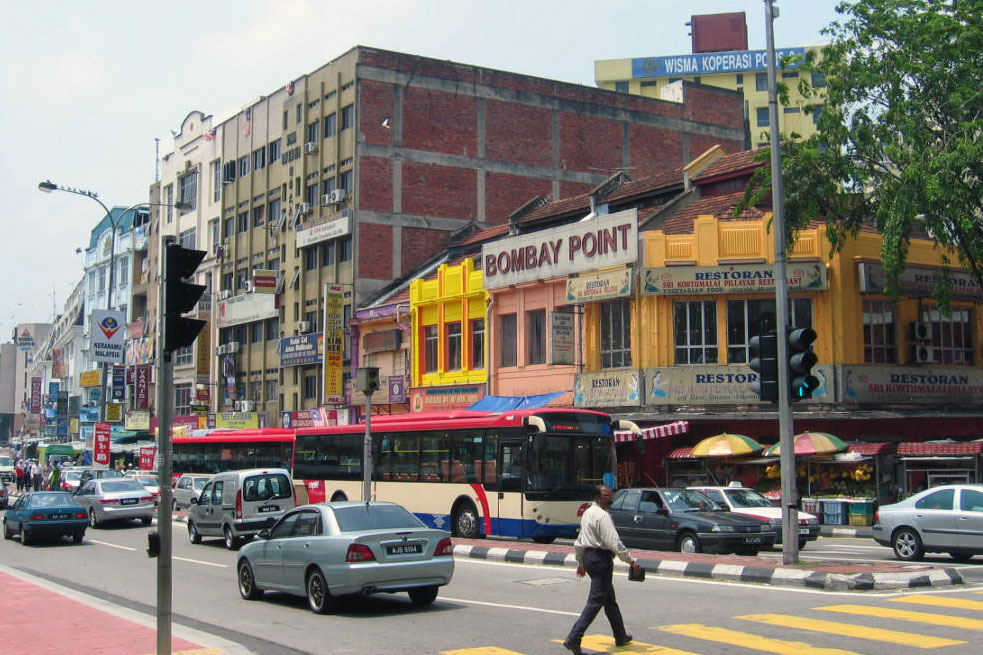
Brickfields, known as “Little India”, is influenced by the city’s sizeable Tamil population.
Bangsar is a highly popular restaurant and nightlife district, while Mid Valley is one of the city’s best known shopping destinations, and home to the enormous Mid Valley Megamall.
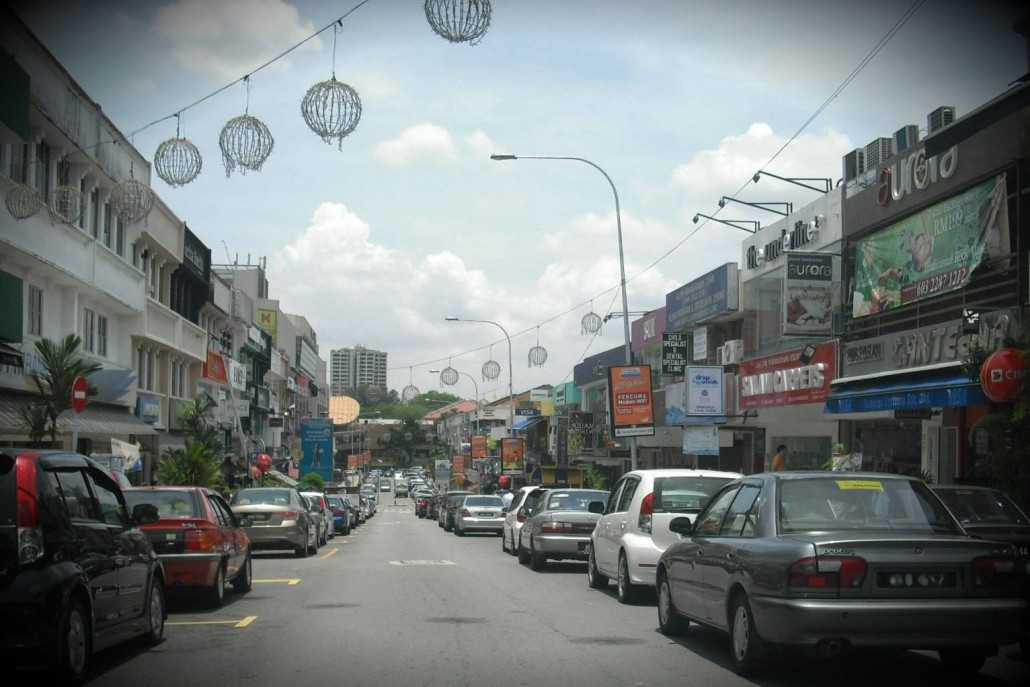
The affluent Bangsar district is a home to countless restaurants and bars, and is one of KL’s hotspots for nightlife.
Visitors seeking a more authentic Malaysian experience can head to Kampong Bharu, one of the last surviving old-style villages in KL. Here, the traditional Malay lifestyle is preserved together with many beautiful Kampung houses.
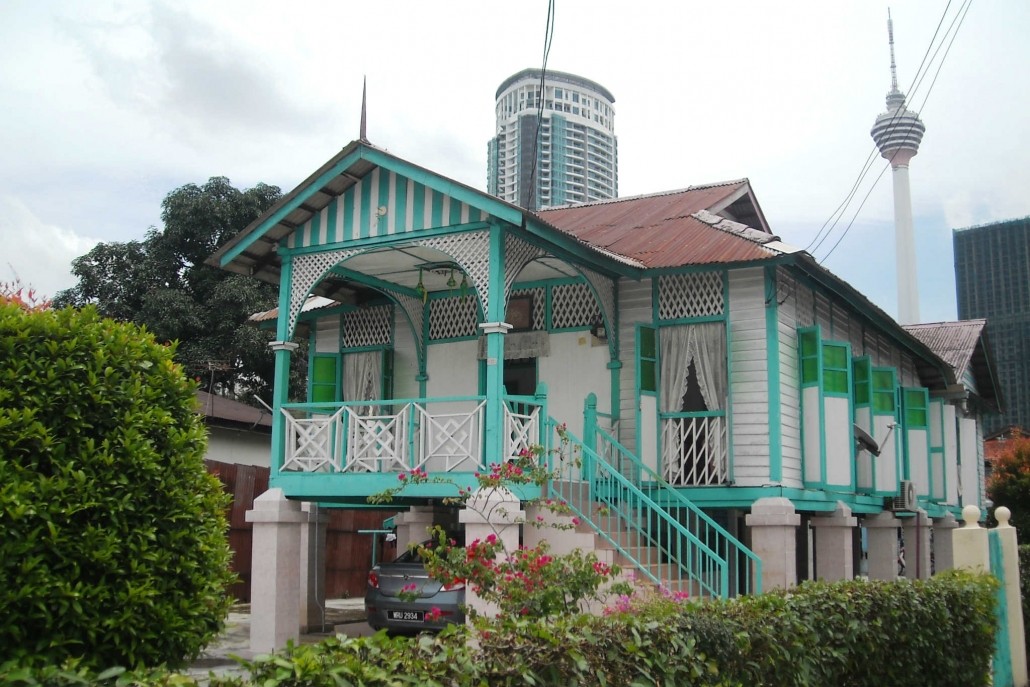
Kampong Bharu is an old-style Malaysian village, where many traditional Kampung houses can still be seen.
Nature lovers can explore a variety of stunning natural attractions around the northern outskirts of the city. These include the Batu Caves, the National Zoo and the Forest Research Institute of Malaysia.
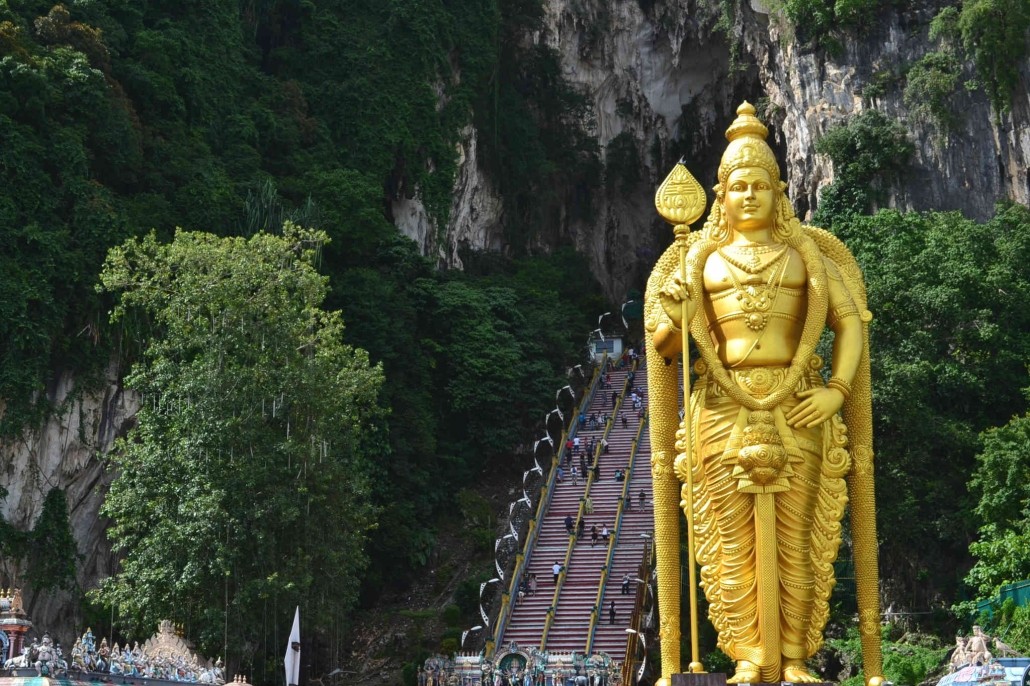
The famous Batu Caves feature a series of Hindu temples and monuments set on a limestone hill.
Cuisine
KL is a great place for an introduction to the delights of Malaysian food. Most people speak English, and can easily explain to visitors what is in each dish.
Delicious food is available on practically every street corner; simply head to the ubiquitous roadside stalls or kedai kopi shops. These operate somewhat like a food court, with many vendors in the same place selling a wide variety of dishes. Also extremely common are kedai mamak (curry houses). One famous collection of streetside mamak stalls is at Jalan Doraisamy, near the Heritage Row (Tuanku Abdul Rahman). Along with curries, here you can also try roti canai. Served with dhal and curry sauce, this filling snack is half chapati, half pancake and wholly delicious.
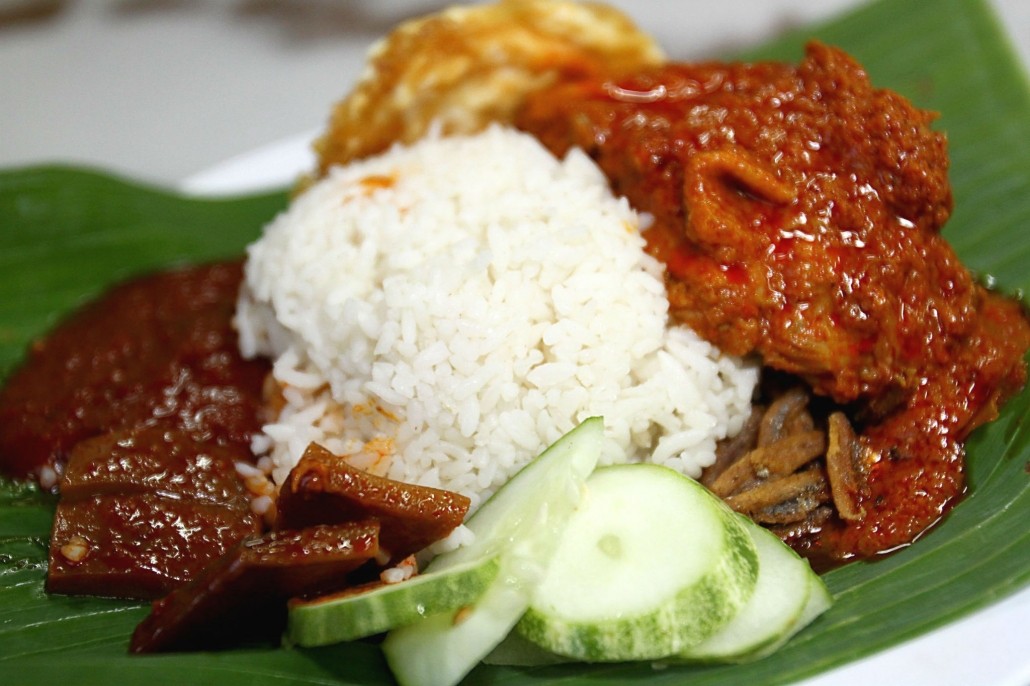
Nasi Lemak, one of the most iconic dishes in Malaysian cuisine, served on the traditional banana leaf.
Traditional Malay food can be found in Jalan Masjid India and Kampung Baru in the Tuanku Abdul Rahman district. Chinatown is unsurprisingly the best place to go for Chinese (especially Cantonese) food, although a full range of Chinese cuisine can be found all over Kuala Lumpur. Lebuh Ampang in the city center and Brickfields are the destinations of choice for Indian food, whilst Bangsar is home to many high-end restaurants serving Western-style dishes. Several Arab and Middle Eastern-flavored restaurants have also sprung up in recent years in Bukit Bintang, Cyberjaya and Damai. Craving your favorite Korean dishes? Head to Ampang Jaya.
Climate
KL enjoys a year-round tropical climate and is usually warm and sunny, with abundant rainfall. The wettest time of year is in November (with an average of 278mm rainfall). June tends to be the driest month, however still sees around 130mm of rain. Flooding is a regular occurrence in the city when there is a heavy downpour, especially around the city center area. Temperatures remain reasonably constant throughout the year, hovering between highs of 31–33°C and lows of 22–23°C.
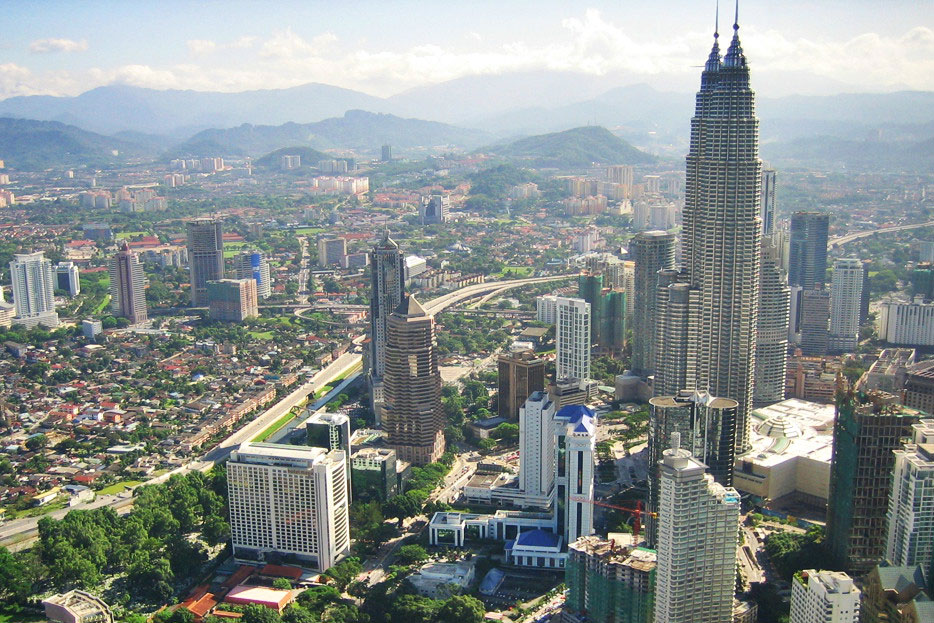
Kuala Lumpur is a city of contrasts, offering visitors a fascinating blend of the ancient and ultra-modern.
KL was the world’s seventh most visited city in 2016, with more than 12 million making a trip to the Malaysian capital. This vibrant destination continues to enchant travelers with its harmonious mix of cultures, irresistible cuisine and renowned hospitality.
Flying to Kuala Lumpur
Landing permits are required for all operations to Malaysia. Private non-revenue permits generally take around three business days to process. However charter (non-scheduled commercial) permits usually require a minimum of two to four weeks lead time, as all charter and scheduled airline permit applications are vetted by the Transport Ministry.
Visa requirements for Malaysia vary depending upon the nationalities of passengers and crew. If passengers are carrying a large amount of taxable goods, these should be declared under a customs ATA carnet. No taxes will be due on these items if the passenger brings them when they exit the country..
Airport Options
There are three airports in Kuala Lumpur, however only two of these are available to General Aviation (GA) operations. These are Kuala Lumpur International Airport (IATA: KUL, ICAO: WMKK) and Sultan Abdul Aziz Shah Airport (IATA: SZB, ICAO: WMSA).
Kuala Lumpur International Airport
WMKK is Kuala Lumpur’s main international airport. Primarily set up for scheduled commercial flights, it is currently ranked as the world’s 24th busiest airport in terms of passenger traffic, and served a total of 52,640,043 travelers in 2016. Located to the south of the city, WMKK is approximately 50 minutes’ drive (68km) from the city center and is linked by a high-quality expressway.
WMKK is a 24-hour Airport of Entry (AoE), and is not subject to any curfews or noise restrictions. Airport slots are mandatory, and should be requested along with the landing permit. Once the landing permit has been approved, the airport slots are also confirmed. There are plenty of aircraft parking spaces available, and long-term parking can usually be secured without any issues.
Sultan Abdul Aziz Shah Airport
Often known as Subang Airport or Subang Skypark, WMSA is located on the west of the city, around 35 minutes’ drive (32km) from central Kuala Lumpur. Sultan Abdul Aziz Shah is geared towards GA activity, and close to the downtown area.
WMSA functions as an Airport of Entry (AoE) 24 hours a day, and does not have any noise restrictions. Airport slots are not required. Aircraft parking spaces are limited, and should be requested well in advance. Operators should always carry their own tow bar onboard. The majority of aircraft will be parked at the General Aviation Terminal (GAT), however larger jets are usually assigned remote parking.
Book Your Trip with Jetex
Planning to visit Kuala Lumpur? Arrange your trip with Jetex!
We offer you a full range of executive aviation services, including international trip planning, ground handling, worldwide fuel uplifts and bespoke concierge services. Our dedicated and highly experienced operations teams are on standby 24/7, ready to assist with every aspect of your journey.
For further information about how you can benefit from our services, please contact our team on +971 4 212 4000, or email info@jetex.com.



